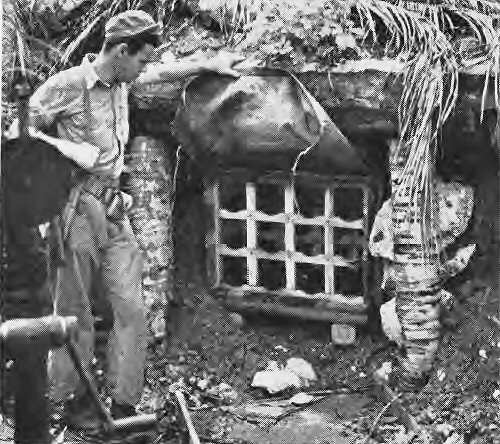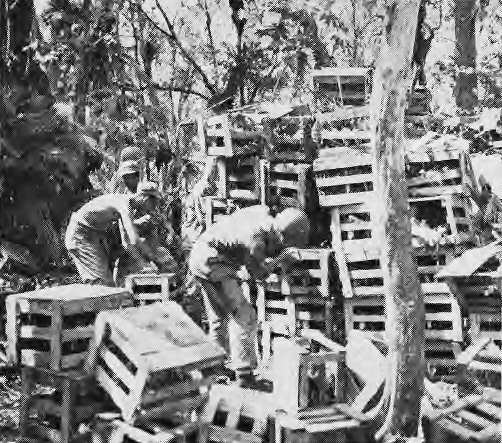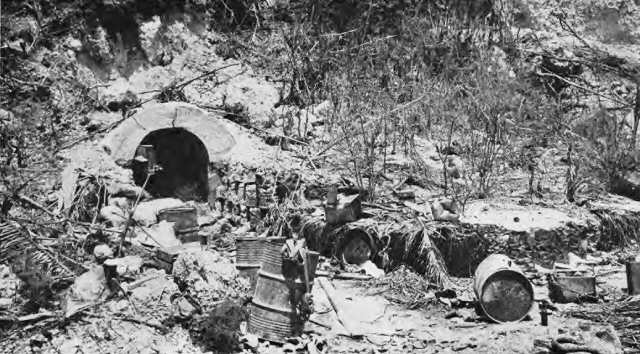

ONE OF the most important secrets to know about the enemy is where he keePs his vital war supplies and what these supply dumps or areas look like from the air. In some cases’ supplies are stacked in piles in a central transportation point from which they are distributed, or they -may be hidden from view under the protection of wooded areas or coconut groves.
Explosive materials are usually given extra protection of heavily reinforced concrete’ structures or even caves dug into sides of hills. Guam offered excellent sites for this type underground storage, and one of these storage caves dug deep in a hillside is illustrated below. Even ready ammunition supplies were given the protection of earth covering, shells being stored on wooden racks built into the sides of revetments around gun positions. These revetments were reinforced with coconut logs and stones and the mounds of earth camouflaged with palm fronds.
Supplies of a nonexplosive non-combustible nature were found stacked in crates under protection of wooded areas. In the photo at right above: Marines are investigating crates of food, candy, and rice wine found on Guam. One of the important functions of photo interpreters in their analysis of aerial reconnaissance photos is spotting Jap supply dumps which are number one targets in a bombing attack.

